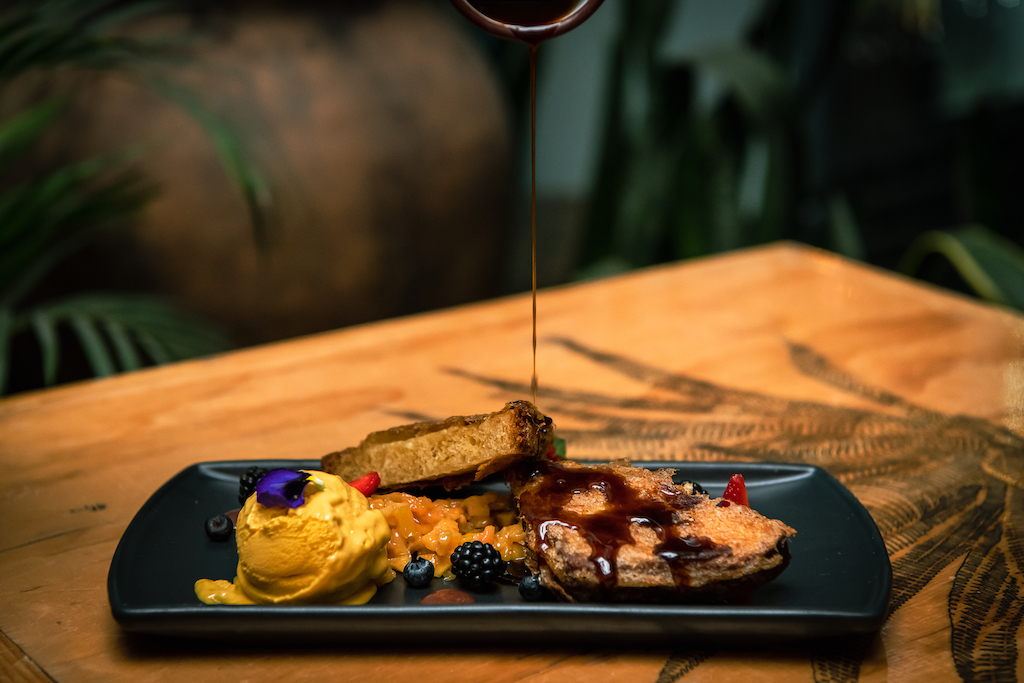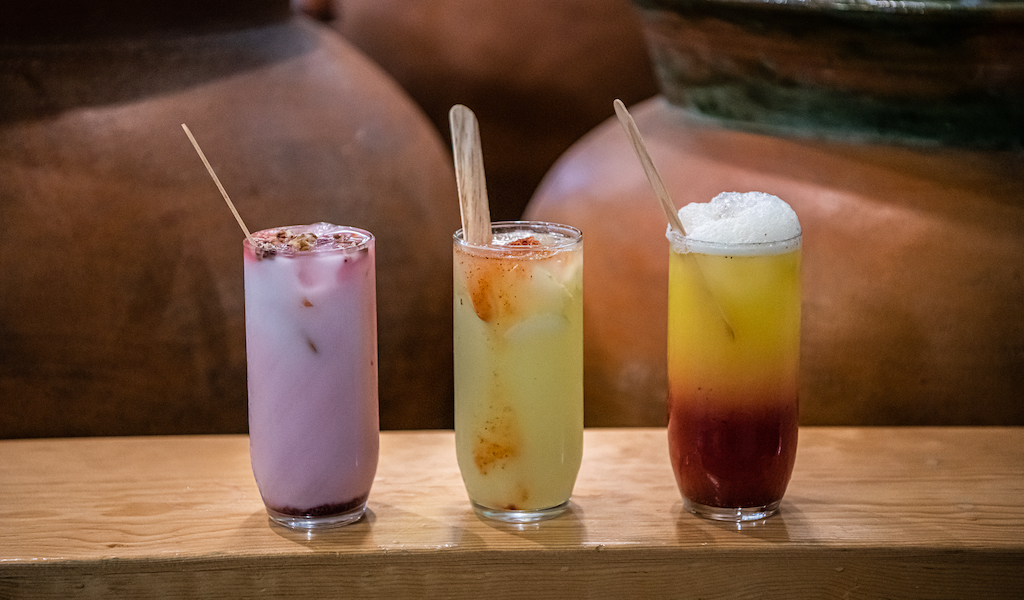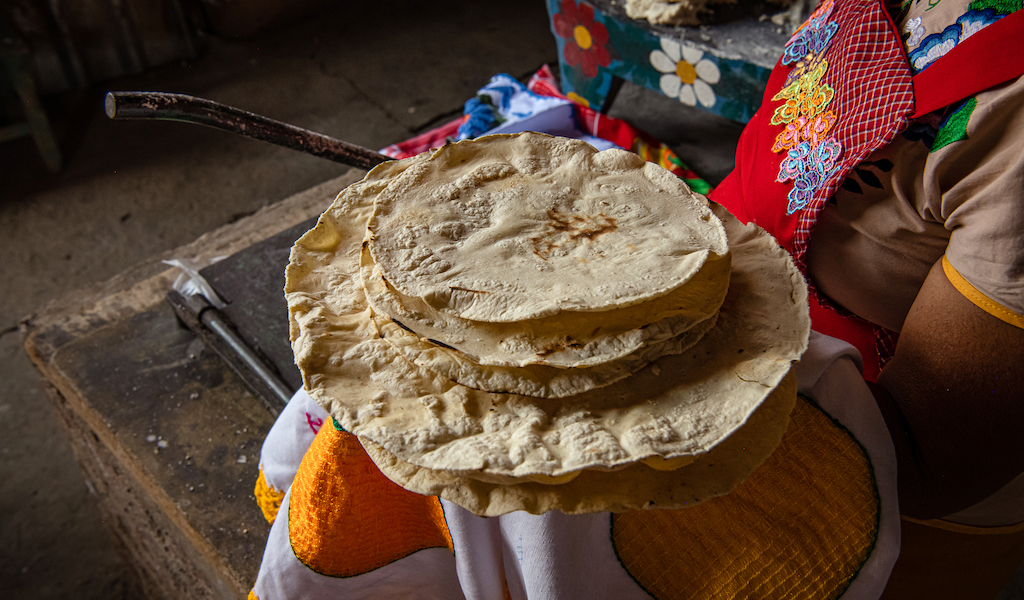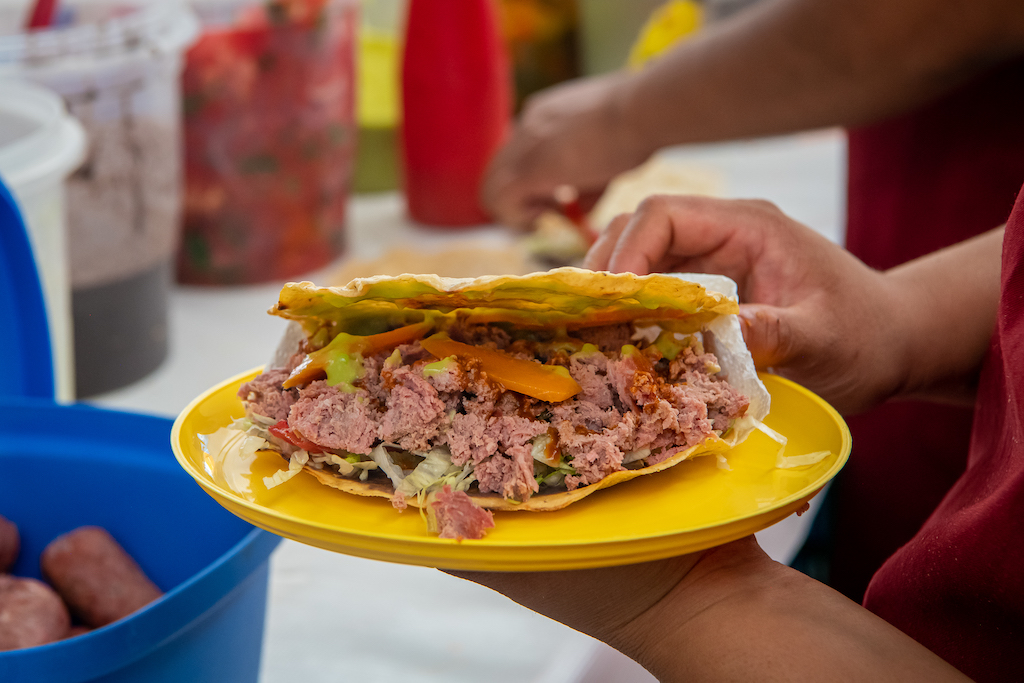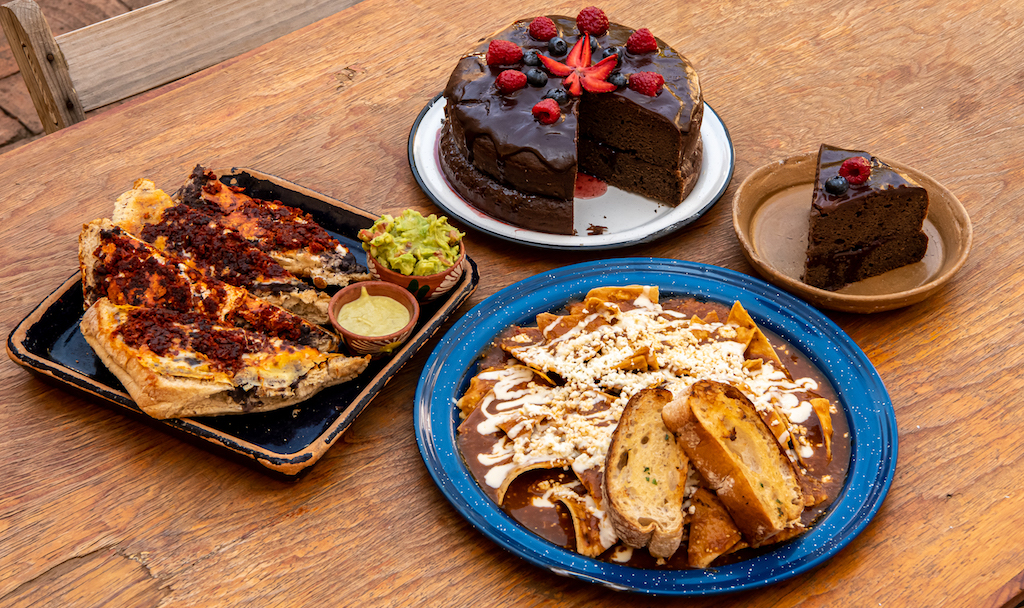We can't find the internet
Attempting to reconnect
Something went wrong!
Hang in there while we get back on track
Search results for "María Ítaka"
Oaxaca
Mezcalite Pop: Oaxaca’s Ice Queen
Oaxaca City has a mysterious hour, a period of the day when time is suspended. As we walk through a hot day of Oaxaca’s eternal summer, the sun is at its zenith and the mind starts slowing down. The streets feel emptier and quieter than ever, though the soundly closed doors hide lively households of buzzing fans and cool adobe walls. When we need respite from the heat, we remember that, just around the corner, salvation awaits at Mezcalite Pop, a lush paleta (popsicle) and ice cream shop that since 2017 has been an oasis in the middle of the green quarry stone desert of Oaxaca’s historic center, always surprising us with its bold, fresh creations.
Read moreOaxaca
El Tendajón Agavería: Something For Everyone
In Oaxaca, when friends come together to eat after a long night out, sitting down for brunch becomes a challenge – everyone has different cravings and dietary needs. In the heart of the city center, there is a place with something for everyone: Tendajón Agavería The all-day eatery is a true standout among the numerous restaurants that serve classic Oaxacan food, offering a variety of dishes that oscillate between traditional and innovative flavors. From the Croque Madame with smoked quesillo to a fresh poleo mint couscous with shrimp cooked in chintextle (chili paste), the menu has a strong Oaxacan overtone interpreted in very unexpected ways.
Read moreOaxaca
Aguas Casilda: Fresh Take
I first met Socorro Irinea Valera Flores years ago, when Oaxaca was not yet under the spotlight of the culinary industry. As part of a high school project in which I had to map Oaxaca’s most “heartwarming” spots for food and drinks, I visited the iconic Aguas Casilda, a nearly 100-year-old storefront that has been selling aguas frescas (fruit-flavored water) to at least three generations of Oaxacan families. The idea of fruit-flavored water might sound strange to foreigners, and unremarkable to most Mexicans (the beverages are common throughout the country, albeit with a more reduced variety). But in Oaxaca, aguas frescas – essentially a mix of fresh fruit pulp, plain water, and some sugar if needed – are synonymous with freshness and excitement, given the selection of different flavors made from the myriad of fruits that grow locally.
Read moreOaxaca
Building Blocks: Tortillas, A Culture’s DNA
Every time we travel outside of Oaxaca, we get something we call “the tortilla blues.” Even if we move around inside of Mexico, particularly in the biggest cities, we cannot help missing the sweet aroma and feel of a warm tortilla almost melting in our hands. Sure, we might run into decadent tacos filled with perfectly cooked meat, or we can taste amazing enchiladas with lush salsa verde. But none of that matters if the tortillas don’t seem to have been touched by the tortillera’s (tortilla maker’s) gifted hands. Everyone talks about the tortilla but not everyone understands it. Supermarkets sell them packed and ready to heat, office workers eat them carelessly at their desks for lunch and only fancy restaurants seem to offer a more authentic version of them.
Read moreOaxaca
Salchicha Ejuteca: The Real Oaxacan Sausage
The history of Oaxacan food is deeply linked to the concept of adaptation. Our culinary identity has many chapters: the Mesoamerican native period, the colonial reign of Nueva España and the Mexico of the 20th century, which received another wave of immigrants who brought their gastronomic traditions and let them combine with the native and more tropical ingredients of these altitudes. That is the story of the salchicha ejuteca, a European style beef sausage that unexpectedly became one of the most desired foods on the Oaxacan snack table. While traditional corn-based products are a signature of Oaxacan cuisine, the salchicha ejuteca is an underestimated traditional element in the state’s food landscape. “Nobody knows for sure where the salchicha comes from.
Read moreOaxaca
Levadura de Olla: Ancestral Kitchen
Standing behind the smoke veil raising from the hot clay griddle, Thalía Barrios Garcia roasts dozens of tomatoes of all shades of red with the confidence of a woman who has her future in her own hands. At the early age of 26, Thalía is the owner and head cook of Levadura de Olla, one of Oaxaca City’s most exciting new restaurants. Despite the pandemic – or maybe because of it – Levadura de Olla’s popularity has skyrocketed in the last few months, likely due to its healthy menu that is friendly to most dietary styles and, more importantly, because it is deeply rooted in the cooking styles of Thalía’s hometown: San Mateo Yucutindoo.
Read moreOaxaca
Oscuro Brebaje: Potent Potions
As difficult as the last two years have been for food businesses, it has offered many establishments an opportunity to rethink how they do things and come back with a greater sense of purpose. Take the example of Oaxaca’s Oscuro Brebaje, a café that took a pause, only to emerge stronger and more inviting. Founded in 2015 by a young barista, Andrés González Martell, Oscuro Brebaje started off serving artsy frappés, light breakfasts and unforgettable cakes – all of which have become the signature bites of this unassuming café located in the old neighborhood of La Noria. Here, locals and visitors interact in the peaceful and picturesque streets full of old houses and colorful facades.
Read more
